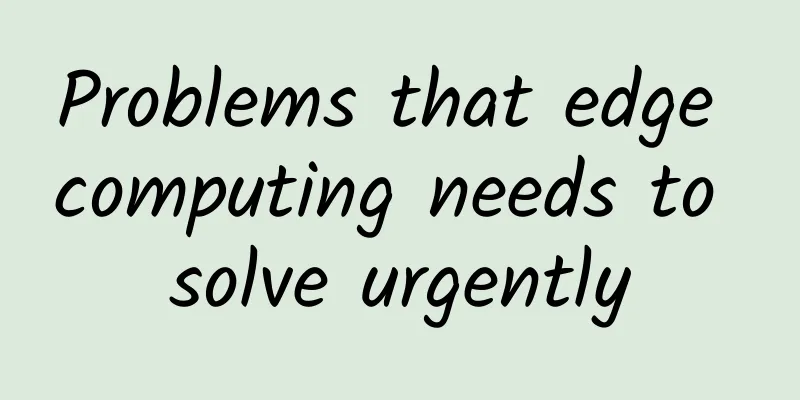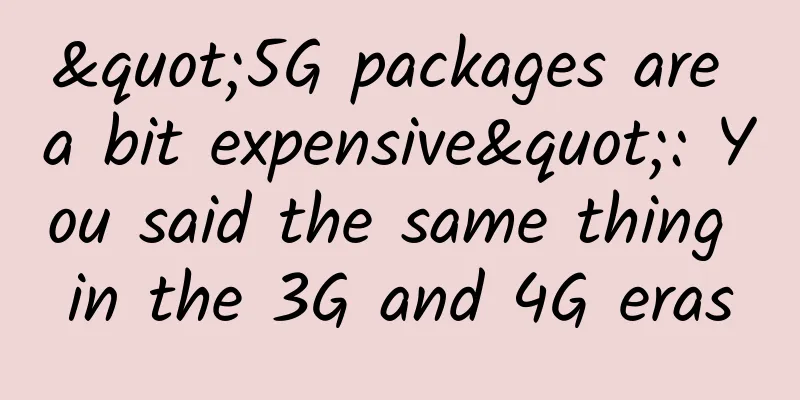5G is here, what can 5G do?

|
5G is here. In order to let everyone know clearly what 5G can do, I will first introduce what networks in different eras have done, so that you can better understand what 5G can do. ***: 1G era Strictly speaking, there is no 1G era. Cellular wireless telephone systems based on analog technology, such as the now obsolete analog mobile network, Second: 2G
2G, the second generation of mobile phone communication technology specifications, is based on digital voice transmission technology. It is generally defined as a mobile phone communication technology specification that cannot directly transmit information such as emails and software; it only has the function of making calls and transmitting some information such as time and date. The technology of this era is still in use today, and some elderly people, remote areas, and poor areas are still using it. In fact, the network in the 2G era was not cheap. There was no foundation for the construction of the 2G era, including base stations, lines, and mobile phones of end users. Although the functions were intelligent, such as making calls and sending text messages, the price was very high. As far as I remember, the long-distance fee in the 1980s seemed to be 1.2 yuan per minute. It seems unbelievable now. Third: 3G When talking about 3G, we have to mention one person
Hedy Lamarr Don't think he is a superstar or actor. Strictly speaking, he is a spy. However, he has a high IQ. In 1941, he applied for a patent called "spread spectrum technology" at the US Patent Office. This technology is a basic technology for 3G expansion. In 1985, a small company called "Qualcomm" developed a communication technology called CDMA. Through CDMA technology, three global 3G standards were extended, the first was CDMA2000 in the United States, the second was WCDMA in Europe, and the third was TD-CDMA in China. From this time on, China's wireless network communications began to participate in the formulation of global standards. The theoretical download speed of 3G is 3m/S. It is just a theoretical speed. Fourth: 4G 4G is a combination of 3G and WLAN, and can quickly transmit data, high quality, audio, video and images. 4G can download at a speed of more than 100Mbps, which is 25 times faster than the current home broadband ADSL (4 megabytes), and can meet the requirements of almost all users for wireless services. In addition, 4G can be deployed in places where DSL and cable TV modems are not covered, and then expanded to the entire area. Obviously, 4G has incomparable advantages. Now, 4G can do a lot of things, and many companies have emerged. In the 1G era, people could only make calls and send text messages. In the 2G era, the most exciting activities were probably voting for programs like Super Girls. Tens of millions of text messages were voted, which was so exciting. In the 3G era, the old thing MMS appeared. To be honest, most people don’t know what MMS is. At that time, even the cheapest MMS cost more than 2 yuan. In fact, it was just a beautiful picture. What’s more, the mobile phones at that time were all black and white screens. In the 4G era, due to the faster network speed and lower tariffs (in fact, the tariffs of mobile phones are very low now. The traffic used by any mobile phone in a day is enough for me to make calls for a year.), various applications such as videos, short videos, mobile games, APPs, etc. have emerged in an endless stream. In the 2G era, any application could make you doubt your life. The tariffs were expensive enough and the speed was slow enough. Fifth: 5G
The fifth generation mobile phone mobile communication standard, also known as the fifth generation mobile communication technology, is abbreviated as 5G. It is also an extension of 4G and is under research. The theoretical downlink speed of 5G network is 10Gb/s (equivalent to a download speed of 1.25GB/s). In fact, many of my friends, including you who are reading this article, would think that 4G is enough, so why do we need 5G or even 6G? 30 years ago, in 1998, 2G mobile phone users also thought so. They didn’t even need landlines to make calls, so why do they need 3G? Facts have proved that 4G has appeared, and 2G will soon be relegated to the museum. Can we say that 5G is useless? What can 5G do? I read relevant materials and came up with the following concepts: 5G can realize the Internet of Everything. Although this concept has been proposed for more than 30 years, the preliminary Internet of Everything can now be realized through 5G. 5G enables remote operation This remote operation is not about operating a computer or a mobile phone, but about remotely operating equipment, tools, and instruments. In the future, the excavator driver of a construction site can directly operate the excavator on the construction site in real time just by getting up at home and sitting at the head of the bed. Isn't it incredible? This will be realized and very soon. Some people can't go to places where there are poisonous places, and they can realize manual remote real-time operation because the Internet speed is fast enough, and the information, pictures, and data transmitted are accurate enough and can be transmitted in real time. 5G can maximize the capacity of mobile phones and computers In fact, to give a simple example, we move files from the D drive to the E drive. Although this is a transfer between hard drives, it will not be transferred immediately. There is a transmission speed between hard drives, and this speed is about 550M. If the network speed can reach 10G per second, we no longer need hard drives, and we don’t need memory cards or anything like that. 5GVR AR technology will be further applied VR AR uses a lot of data transmission, and with the implementation of 5G, VR AR technology will be popularized very quickly. |
>>: 12 principles to make data centers perform better
Recommend
Will there be any problems if the algorithms on both ends of a switch link aggregation are inconsistent?
What is Link Aggregation? Link aggregation is a t...
[Black Friday] TmhHost recharge 10% bonus, Japan CN2 online quarterly payment starting from 200 yuan, elastic cloud host online 20% off
TmhHost has launched a promotion during Black Fri...
The three major operators are deploying the next generation of the Internet of Things and have determined three specific directions
In 2017, the Internet of Things industry ushered ...
Why are miners rushing to buy graphics cards instead of CPUs? When will the graphics card shortage end?
[[383936]] Recently, it has been a nightmare for ...
China leads in 6G patent applications, satellite communication technology attracts attention
On April 26, the Intellectual Property Developmen...
HostXen offers 20 yuan for registration, US/Japan/Hong Kong VPS monthly payment starts from 50 yuan, configuration DIY upgrade
HostXen is a DIY cloud hosting platform that emer...
5G infrastructure and the need for end-to-end programmability
By Alok Sanghavi, Senior Product Marketing Manage...
Ministry of Industry and Information Technology: Promote 5G application innovation in the field of industrial Internet
On June 8, the Ministry of Industry and Informati...
DogYun Korean Classic Cloud is now available at 30% off, starting from 17.5 yuan per month or 175 yuan per year
I received a message from DogYun that the Korean ...
Operators’ Path to Artificial Intelligence
After a year of development, AI technology and ap...
6G is coming, how will the business change?
The next generation (6G) transmission technology ...
How many people are using invalid 5G? The price has doubled, and the experience has become worse
It has been two years since the promotion of 5G b...
Let's talk about the communication protocol I2C subsystem
I2C Transfer Definition of timing To explore the ...
How to choose the correct branch jumper for the switch
This article will serve as a guide for using MTP ...









